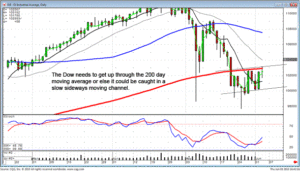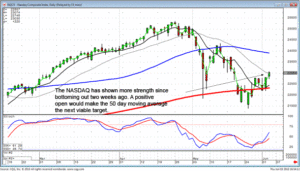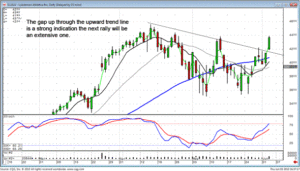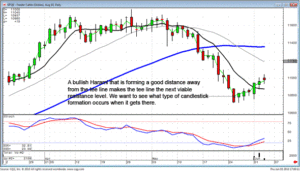Commodity options are a commonly used means of handling investment risk in trading commodity futures. By purchasing options contracts instead of directly purchasing futures contracts traders retain the right to buy or sell futures but have no obligation to do so. In using commodity options the trader will need to pay an option premium. However, the premium is the extent of his or her risk in options trading. In buying calls or buying puts in the commodities markets the trader can profit from a large shift in commodity prices but not suffer a loss if prices move in an unexpected direction. Traders selling puts and selling calls collect premiums in commodity options trading but also accept the risk of a large loss. Commodity and futures training will help the beginning trader get a handle of commodity options.
Commodity options are options on whether to buy or sell commodity futures. Commodity futures trading is contracting to buy or sell a standardized lot of a commodity at a future date. If the price of the commodity goes up or down substantially and in the desired direction the trader makes a handsome profit and if the commodity price moves adversely the loss can be devastating. By using commodity options the trader can buy a call or buy a put on a commodity futures contract. This will give him or her the right, but not the obligation, to buy or sell a commodity futures contract. If the trader believes that a commodity price is and will remain stable he or she may choose to sell puts or calls on the commodity. Providing that the price does remain stable the trader will gain the premium on each trade. Over the long term selling options is typically more profitable than buying. However, the trader needs to be able to withstand an occasional substantial loss.
Whether the trader is dealing directly with commodity futures or chooses to trade commodity options it is important to have a clear sense of the range of possibilities the commodity in question will offer. This starts with the basic fundamentals and then moves on to the technical aspects of the commodity market. Both fundamental and technical analysis come into play as fundamental analysis will help predict the spot price of the commodity at contract expiration and technical analysis will help predict daily price movement of the futures contract. The trader is best served by doing his or her fundamental and technical analysis on the commodity in question well in advance of trading it. When the trader is quite certain in his or her belief that a commodity price will go up or down it may be best to simply buy or sell a futures contract. It is when there is some uncertainty involved that the trader will purchase and options contract. Then, if the desired price move occurs the commodity trader will execute the options contract and buy or sell the commodity futures contract. If the desired price movement does not occur he or she will simply swallow the price of the premium as a cost of doing business and not suffer a loss in direct commodity trading.
What is the market telling us? The Dow has been in the oversold condition and exhibiting candlestick buy signals. Today it had trouble getting up through the 200 day moving average, but an indecisive trading day after a large bullish day as seen on Wednesday is not unexpected. The NASDAQ is giving more bullish tendencies. After coming up through the 200 day moving average, it has used the 200 Ma for support over the past few days. The NASDAQ is trading above the tee line. Although the upward trend may be very lethargic, as long as the indexes remain above the tee line the uptrend has to be considered in progress. This scenario has changed a couple of times over the past two weeks due to the dramatic oscillation of each trading day.
As witnessed at the end of April, when the markets start showing great indecision, that is the time to start watching for a trend reversal. This is time to start watching for bottoming signals in individual stock prices. A bullish candlestick signal needs to be followed by a close above the tee line. Remain nimble, meaning be prepared to get into positions and out of positions relatively quickly if investor sentiment dramatically reverses.

DOW

NASDAQ
Because candlestick analysis is based primarily upon the high probability situations, the analysis of today’s market conditions indicate bottoming action and a high probability that an uptrend should be in progress. The magnitude of the uptrend is what will need to be watched. The next few days will give an indication of whether a strong uptrend is in progress or a sideways slowly moving uptrend is in progress. Fortunately, in either case, candlestick scanning capabilities allows for identifying which sectors/stocks will be performing the best.

LULU
The T-line is a very important confirming indicator. However, it is often asked whether a position should be bought below the tee line. The answer to this question is a function of how far away prices have moved from the T-line. As seen in the August Feeder Cattle chart, a bullish Harami/Hammer signal formed well in the oversold area. Buying on the confirmation of that signal is more important if the price has moved a decent ways away from the tee line. The strategy becomes a little different. The important factor for when to buy or when to sell is based upon witnessing a candlestick reversal signal when stochastics are either in the overbought or oversold condition. The T-line is an excellent additional confirming indicator. However, when the price moves away from the T-line before reversing, the T-line now becomes the first area to watch to confirm whether an uptrend is in progress.

Feeder Cattle
As seen in the August feeder cattle chart, when the trading did come up to the T-line, it was evident there was not going to be resistance at that level. If you have been attending the free chat room training sessions on Thursday nights, you’ll often hear analysis that says, “Wait to see what the price does when it gets to the next moving average.” Waiting to see what it does at a specific moving average means seeing what type of formation forms at that level. Candlestick signals are going to reveal whether investor sentiment was very decisive going through that moving average or whether an indecisive/sell signal formed once it got to the projected target. This information is extremely useful when establishing trades below the T-line.
Chat session tonight 8 PM ET – We will be looking at which sectors should be coming out of this bottoming action with the best strength. Remember, Tina Logan will be presenting next Thursday June 10th.
Good Investing,
The Candlestick Forum Team
July 2010
Candlestick Technical Analysis Webinar – July 10 & 11
Options Training Webinar – July 31st & August 1st
Website special reflects current newsletter. If you are reading an archived newsletter you will be directed to Current Website Special.
Speak Your Mind